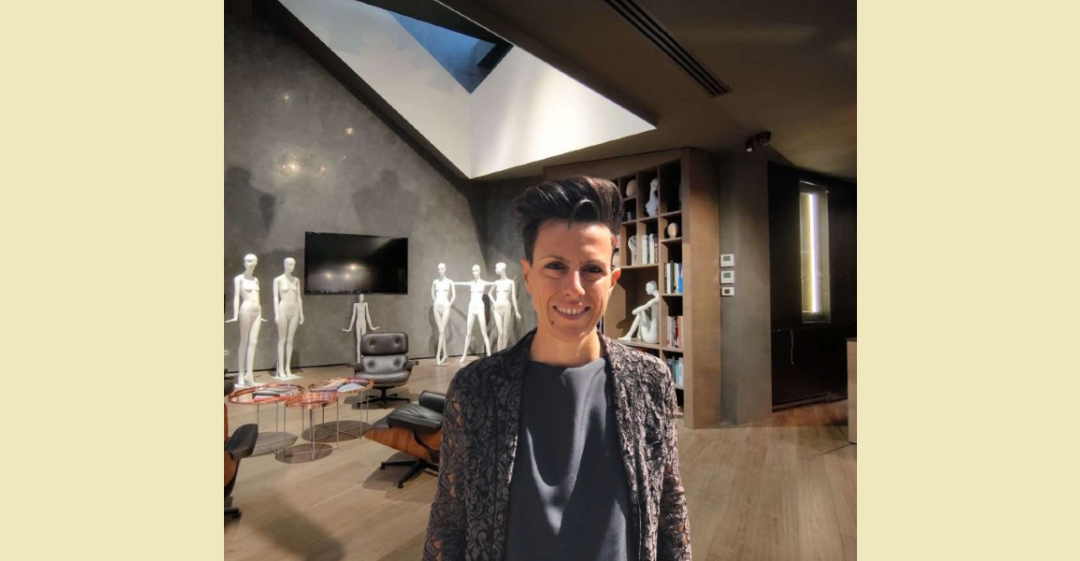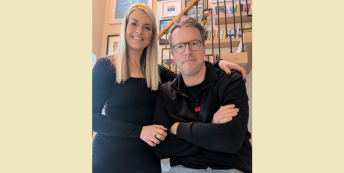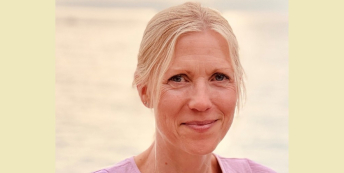“I felt trapped in a routine that left no room for my life or growth.”

What work were you doing previously?
I worked for nine years as a Visual Merchandiser Manager for several fashion brands.
The brands included Moschino, Dolce & Gabbana, Costume National and La Rinascente and I was responsible for coordinating and supervising the visual image of stores worldwide.
I managed other visual staff involved in creating displays. I personally oversaw new store openings as well as the setting up of boutiques, showrooms, special events, and trade fairs.
What are you doing now?
I’m working as a retail consultant.
I specifically help store owners improve communication, product display, and overall store image.
I also assist them in enhancing the customer experience and developing strategic and commercial solutions to boost sales performance.
I'm involved in education in the field of Visual Merchandising. I currently teach at the international university Istituto Marangoni in the “Fashion Styling and Creative Direction” and “Fashion Management” courses.
I also teach at the professional institute ACOF in Milan for the “Fashion Styling” programs.
I run various courses by different Chambers of Commerce across Italy, Federmoda and other private organizations.
Why did you change?
I decided to change my life because, as an employee, I felt trapped in a routine.
Routine left no room for my personal life, experimentation, study, or growth – both personally and professionally.
It felt as though every year was the same: the collections changed, but the pace and dynamics remained unchanged.
When was the moment you decided to make the change?
I spent two years thinking about quitting my job and changing my life before I finally found the courage to do it.
One day I told myself: you still have plenty of time ahead of you (I was 34), a solid CV behind you, and a whole world waiting for you – just do it.
Worst case, you can always go back.
After resigning without any backup plan, I took some time off – a much-needed period of rest – and decided to go on a journey with no fixed plans and no return ticket.
My first stop was Rome, then the Maldives, followed by India, and finally Bali.
I spent about a month and a half in the last two destinations, searching not only for a possible new way of life, but perhaps more for myself.
All the people I loved were actually back in Italy. Being so far away made me rediscover and deeply appreciate my country, so I decided to return – but not to Milan.
I chose instead to start a bucolic experience working on organic farms in central Italy. In the end, my sabbatical stretched into three years.
How did you choose your new career?
Thanks to an unexpected opportunity – a contact on LinkedIn – I began consulting for an Italian brand with two boutiques in Capri and Palm Beach.
That’s when the spark of my passion for the world of Visual Merchandising was reignited.
From there, I started taking on more consulting projects, which brought me back into the retail world – not as an employee anymore, but as a freelancer.
Are you happy with the change?
I’m very happy with the change I made.
Being in control of your own life, being present for the people you love, and being able to develop different projects at the same time is truly priceless.
Life has regained its meaning, and although things aren’t always easy without a fixed monthly income, the rewards are abundant.
I’ve been able to fulfill several long-held dreams, including starting a family, writing a book on Visual Merchandising, and buying a home surrounded by nature.
I live close to Milan, yet far from the chaos – in a slower, healthier environment.
What do you miss and what don't you miss?
What I miss most about being an employee is the teamwork, colleagues, shared projects, and of course, the steady paycheck and the perks.
I definitely don’t miss the routine or the feeling of being chained down.
How did you go about making the shift?
My change didn’t follow a carefully thought-out plan, but rather the natural flow of things, which I chose to trust.
It wasn’t something rational or premeditated, but more about listening to my feelings and following my instincts and desires.
Sometimes the path reveals itself as you walk it; you don’t see it right away.
How did you develop (or transfer) the skills you needed for your new role?
Since I stayed almost within the same field I came from, all my previous skills proved extremely useful in facing my new job.
These skills gave me the credibility I needed to enter a new and much broader market.
I had to study a lot to refine my knowledge and learn everything necessary to, in a way, become an entrepreneur. I took many courses, read lots of books, and did a lot of networking (never enough).
As a freelancer, you no longer have the backing of a company’s name behind you. You have to build a new image for yourself that is credible, strong, and reliable.
That definitely requires resources, not only in terms of effort but also financially. You have to learn to invest in yourself and I’ve learned to do that, though not without making a few mistakes along the way.
What didn’t go well? What wrong turns did you take?
Before deciding what I really wanted to do “when I grew up,” I invested a lot of time, energy, and money into two other entrepreneurial ideas.
The first one, while I was still employed, was an attempt to start a vegan-vegetarian catering business with a friend.
However, the project stalled before it even got off the ground – not without costing us plenty of energy, time, sleep, and money and ultimately, it also marked the end of our friendship.
The second false start happened when I tried to set up a small lab for producing fresh aloe juice on my own.
After a year and a half spent figuring out how to make the business legal (Italy’s food regulations are truly a nightmare), viable, and economically sustainable, I realized the project just wasn’t feasible.
As a freelancer, I also created digital products that I was never able to sell on my own. This resulted in wasting a significant amount of money and, above all, countless hours of work.
My Visual Merchandising video course (available in both Italian and English) is being sold online through a partner platform, which handles all the digital aspects, including launch, advertising, and promotion.
I believe collaboration is one of the essential elements for any freelancer, because doing everything alone is truly impossible.
How did you handle your finances to make your shift possible?
Fortunately, I’d always envisioned starting a personal project one day.
So, during my years as an employee, I managed to save a decent amount of money.
This later allowed me to step away from my job and dedicate myself fully to my own path.
If you avoid spending money on unnecessary indulgences, I can assure you that it’s possible to save a significant amount over time.
What was the most difficult thing about changing?
Change is scary.
My biggest fear was, first and foremost, disappointing my parents by leaving an excellent job, a great position, and a good salary.
Then, of course, there was the fear of uncertainty – I truly took a leap into the unknown, with no plan except a one-way ticket.
For me, this change coincided with the desire and necessity to move away from Milan, so it also involved the fear of leaving friends and, essentially, the second life I had built there.
I’m originally from southern Italy, so it wasn’t easy for me to leave everything and move to Milan back in 2005. Naturally, I felt the same apprehension when leaving Milan in 2014.
What help did you get?
The greatest support I got was emotional support.
It was rooted in the certainty of truly knowing and feeling my family’s support.
What have you learnt in the process?
Freedom is priceless.
Living without regrets is priceless. Life is a wonderful journey, and it takes courage to live it to the fullest.
But it also teaches that before letting go, perhaps we need to learn to rest when we’re reaching our limits.
Running away from your fears doesn’t help – they follow you wherever you go. And true friends will wait for you even after the storms diminish, but those who stay, stay for life.
What do you wish you'd done differently?
Before leaving for my trip, I had the opportunity to interview with Louis Vuitton for a very interesting position in Dubai.
I have to admit, I kind of wish I’d gone through with that interview, just to see what would’ve happened next.
What would you advise others to do in the same situation?
Just GO.
What resources would you recommend to others?
Be honest with yourself, seek your uniqueness, your truth, and follow your instinct.
However, don’t jump in without at least a small safety net – I mean, a minimum level of planning is necessary before facing the unknown.
Make sure you have at least a budget that allows you to live comfortably for a couple of years, because clarity doesn’t come in just one month!
Start living with less right away – practice it – because often dissatisfaction comes from already having everything.
To find out more about Monica's book, visit https://mmvisual.it/libro/
What lessons could you take from Monica's story to use in your own career change? Let us know in the comments below.



